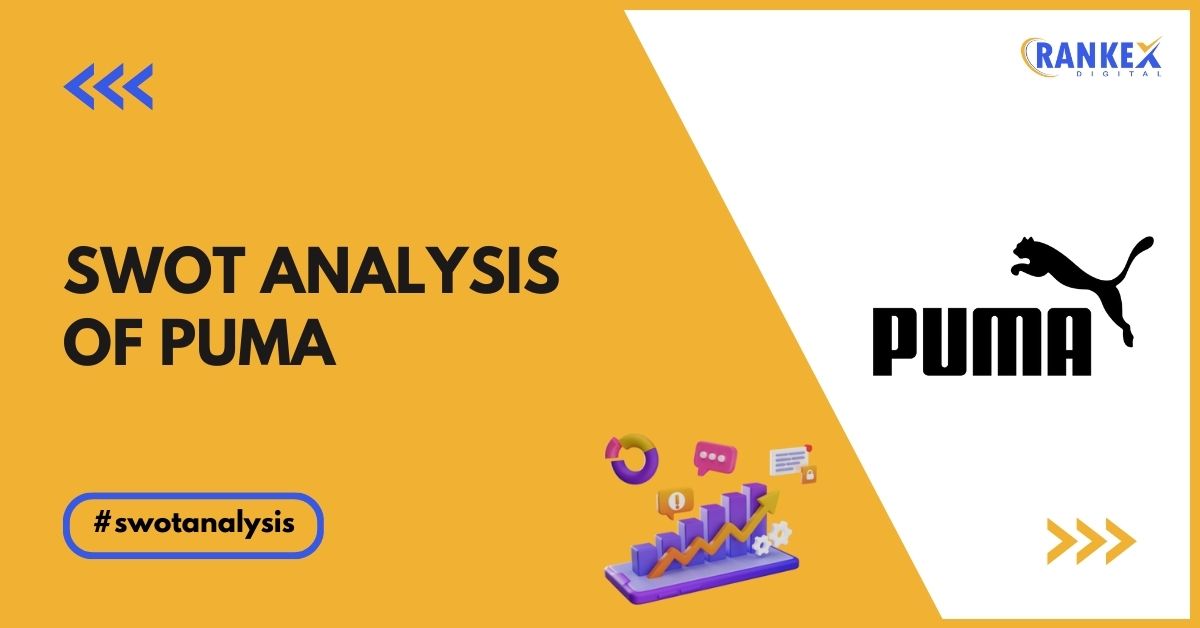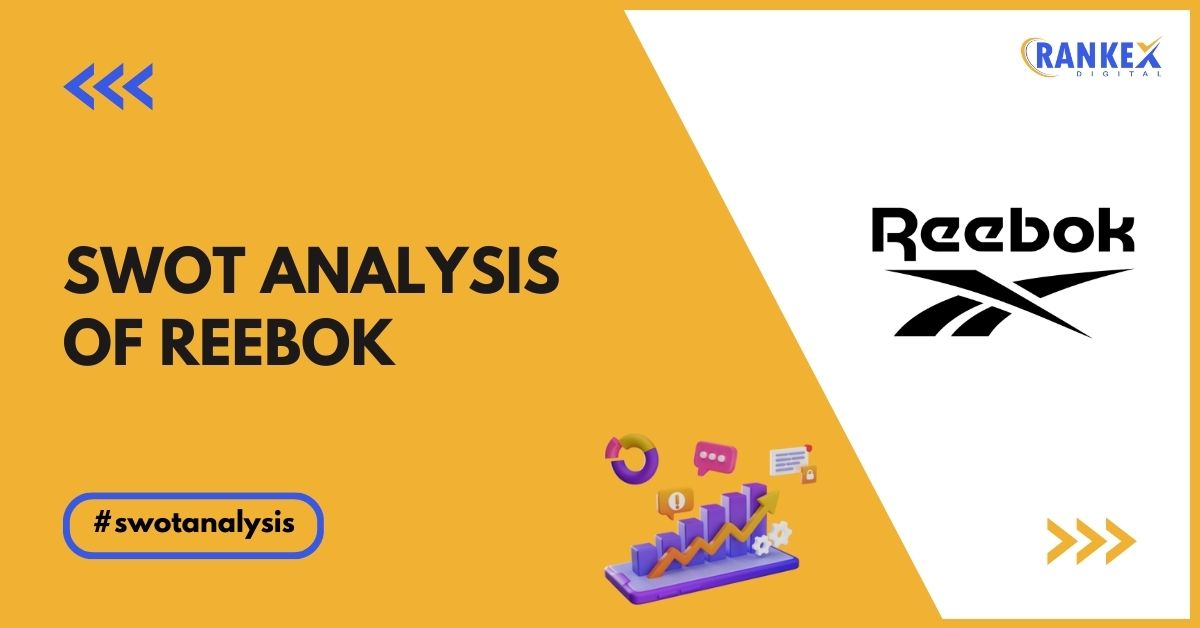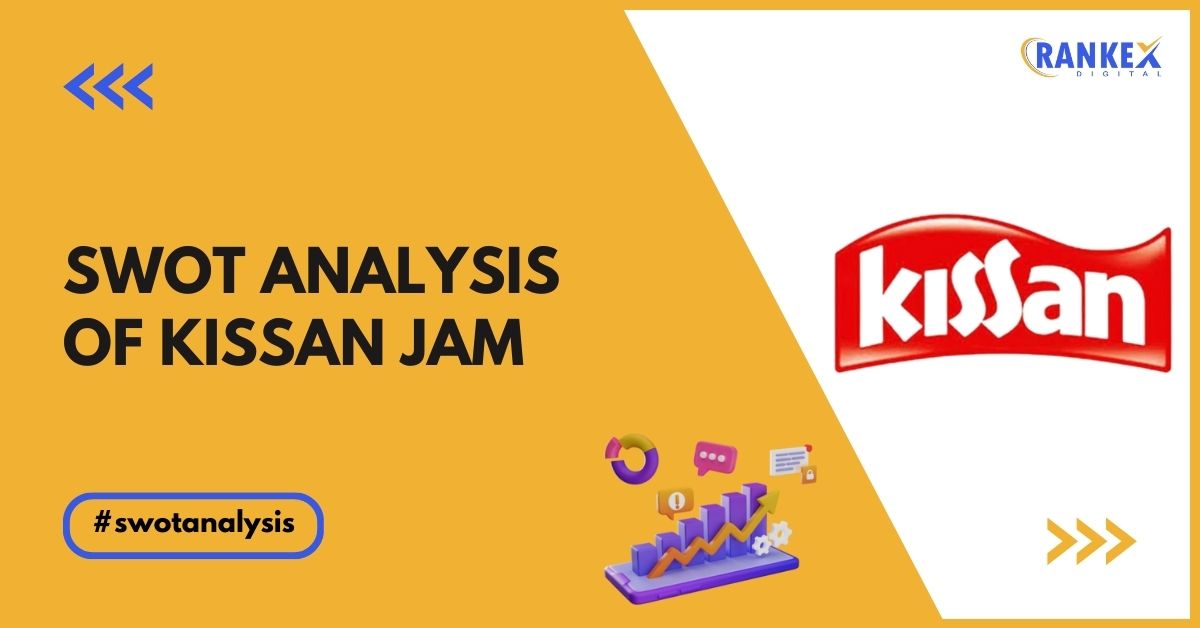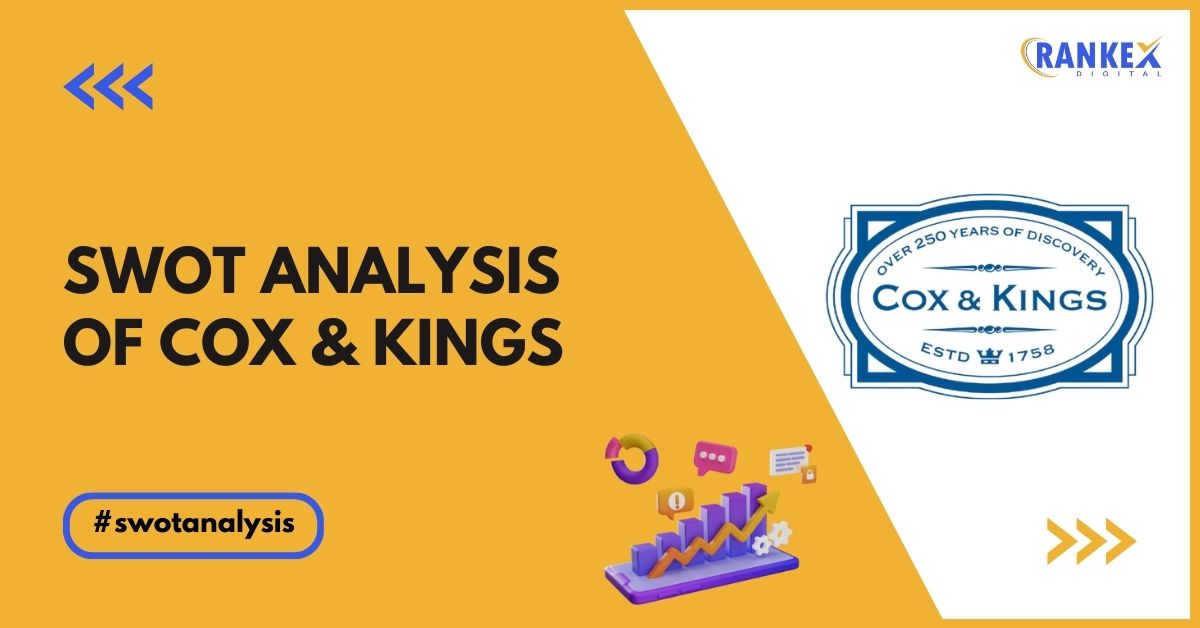Puma, one of the world’s leading sportswear companies, has carved a niche for itself in the athletic and lifestyle market.
Known for its innovative designs, strong celebrity endorsements, and commitment to sustainability, Puma remains a key player in the competitive sports apparel industry.
As of 2025, in the swot analysis of Puma continues to evolve, embracing new trends while maintaining its brand identity.
Table of Contents
Overview of Puma
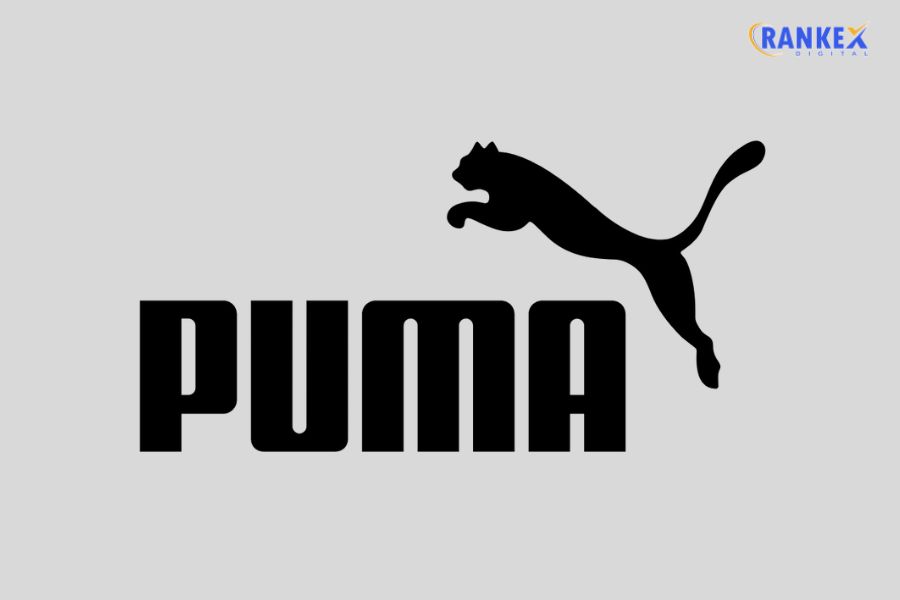
| Founders | Rudolf Dassler |
|---|---|
| Year Founded | 1948 |
| Origin | Germany |
| Industry | Sportswear & Apparel |
| Annual Revenue | €8.6 billion (FY 2023) |
| Employees | 16,000+ |
Puma operates across the globe, selling sports apparel, footwear, and accessories, with a focus on performance, lifestyle, and fashion-forward products.
Current News on the Market on Puma
- Sustainability Initiatives: In 2023, Puma intensified its focus on sustainability by launching eco-friendly collections made from recycled materials. The company is also aiming to achieve 100% renewable energy usage across its global operations by 2025.
- Collaboration with Celebrities: Puma continues to strengthen its brand through high-profile partnerships with celebrities like Rihanna, Neymar, and Usain Bolt, increasing its appeal to younger, fashion-conscious consumers.
- Expansion in Emerging Markets: Puma has been aggressively expanding its presence in emerging markets, particularly in Asia and Latin America, to capitalize on the growing demand for sportswear in these regions.
- Technological Advancements: Puma has invested in digital technologies to enhance its e-commerce experience, improving customer engagement and creating a seamless online shopping experience.
- Performance in Football: Puma has maintained its strong presence in football, signing endorsement deals with top athletes and sponsoring major football clubs such as Manchester City and AC Milan.
SWOT Analysis of Puma
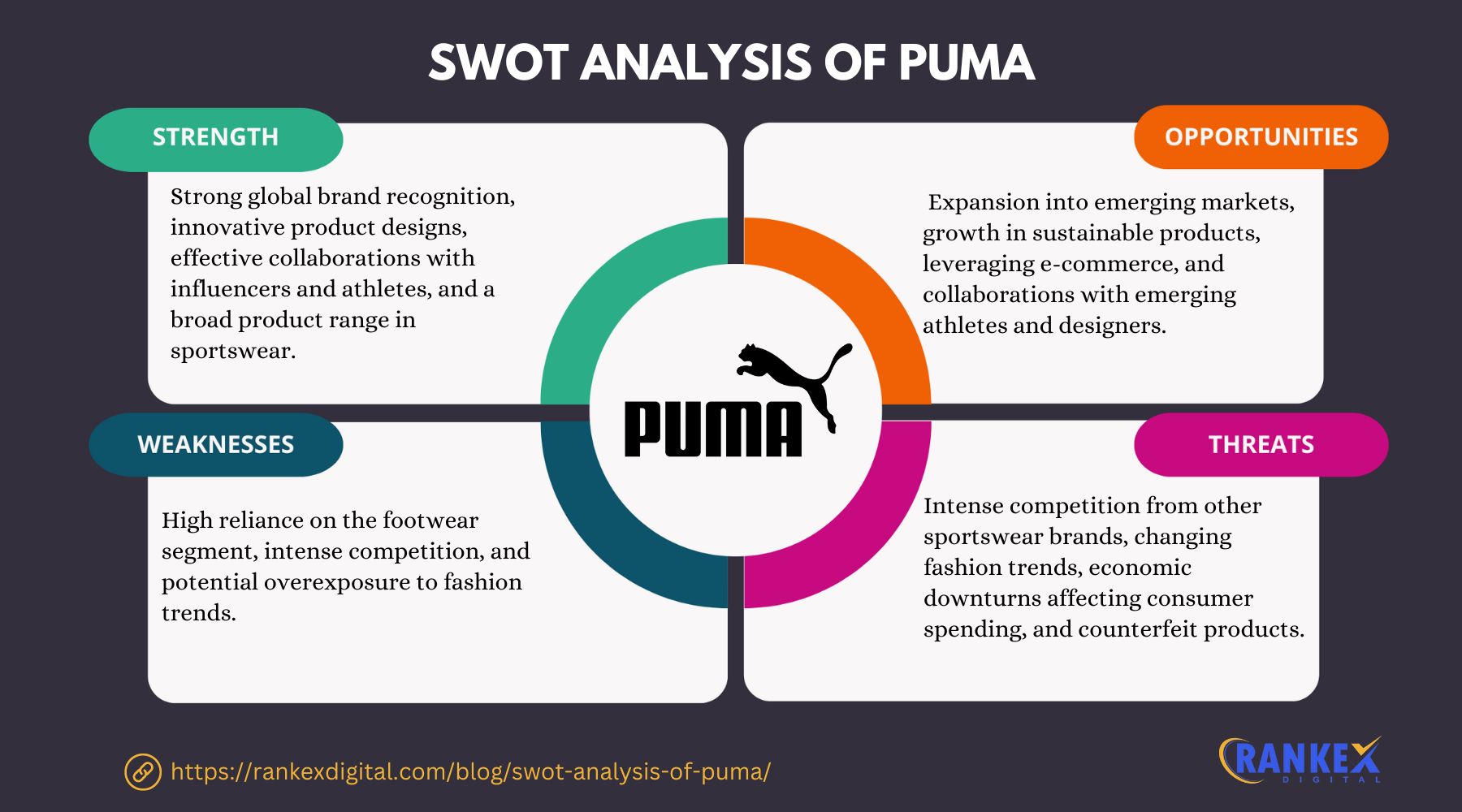
Strengths of Puma
- Strong Brand Identity
Puma is one of the most recognized sportswear brands in the world, known for its fusion of performance and style. Its distinctive logo and association with high-profile athletes and celebrities reinforce its strong brand identity. - Celebrity and Athlete Endorsements
Puma’s collaboration with top athletes and celebrities, including Usain Bolt, Neymar, and Rihanna, has helped boost its global appeal. These partnerships have significantly increased its visibility and credibility in both the sports and fashion industries. - Innovative Product Design
Puma is known for its innovative and fashionable designs. The company frequently collaborates with designers and influencers to create limited-edition products that appeal to fashion-forward consumers. - Sustainability Focus
Puma is committed to sustainability and has implemented eco-friendly practices across its operations. The company has introduced collections made from recycled materials and aims to reduce its carbon footprint, which resonates well with environmentally conscious consumers. - Global Distribution Network
With a strong global presence, Puma has a well-established distribution network that allows it to reach consumers in more than 120 countries. This global footprint enables the company to quickly respond to market demands and expand into new regions.
Weaknesses of Puma
- High Dependence on Footwear
Although Puma has diversified its product offerings, the company still heavily relies on its footwear segment. This dependency could limit its ability to grow in other categories, such as apparel and accessories. - Limited Market Share Compared to Competitors
Puma’s market share is smaller compared to giants like Nike and Adidas. Despite strong growth, the company faces challenges in competing with these larger brands, particularly in key markets like North America. - Perception as a Niche Brand
While Puma has a strong reputation, it is often perceived as a niche brand focused on lifestyle and fashion rather than performance sports. This perception may limit its appeal to serious athletes who prefer performance-focused brands. - Price Sensitivity in Emerging Markets
Puma’s products are often seen as premium in emerging markets, where price sensitivity can be a challenge. This can limit its ability to penetrate lower-income consumer segments in regions like Asia and Latin America. - Over-reliance on Celebrity Endorsements
While celebrity endorsements have been a strength for Puma, over-reliance on these partnerships can be risky. Any negative publicity or departure of key celebrities could negatively impact brand perception.
Opportunities for Puma
- Expansion into Emerging Markets
Puma has significant growth opportunities in emerging markets, particularly in Asia and Africa. The increasing demand for athleisure and sportswear in these regions presents a chance for Puma to further expand its presence and capture new customers. - Growth in Women’s Sportswear
The global market for women’s sportswear is growing rapidly. Puma has the opportunity to expand its offerings in this segment, focusing on performance and lifestyle products designed specifically for women. - E-commerce and Digital Transformation
The shift toward online shopping presents a significant opportunity for Puma to enhance its e-commerce capabilities. Investing in digital marketing, personalized shopping experiences, and direct-to-consumer platforms can drive growth. - Product Diversification
Puma can continue to diversify its product portfolio by expanding into new categories such as athleisure, tech-infused apparel, and sustainable fashion. This diversification would help reduce dependence on footwear and tap into new consumer segments. - Sustainability and Ethical Sourcing
Puma can strengthen its position by doubling down on sustainability initiatives. As consumers become more eco-conscious, Puma’s focus on sustainable materials, carbon reduction, and ethical sourcing can improve its brand image and attract new customers.
Threats to Puma
- Intense Competition
Puma faces intense competition from global sportswear giants like Nike and Adidas, as well as emerging brands that offer similar products at competitive prices. The competitive landscape can make it difficult for Puma to maintain its market share. - Fluctuating Economic Conditions
Economic instability, inflation, and currency fluctuations can negatively impact consumer spending on premium products, especially in emerging markets. This could slow Puma’s growth in key regions. - Changing Consumer Preferences
Consumer preferences are constantly evolving, with a growing focus on health, wellness, and sustainability. Puma must continually adapt its product offerings to meet these changing demands, or risk losing relevance in the market. - Supply Chain Disruptions
Global supply chain disruptions, such as those caused by the COVID-19 pandemic, can affect Puma’s ability to source materials and deliver products to consumers. Any delays or increased costs in the supply chain can impact profitability. - Negative Publicity
Like any global brand, Puma is vulnerable to reputational risks, including labor practices, sustainability issues, or missteps in marketing campaigns. Negative publicity could damage the brand’s image and customer loyalty.
Competitors of Puma
- Nike
Nike is Puma’s largest competitor, with a dominant global presence and a focus on both performance and lifestyle products. Nike’s strong marketing and product innovation make it a formidable rival. - Adidas
As another major competitor, Adidas challenges Puma in the sportswear and athleisure markets. Both companies compete for market share in football, running, and lifestyle segments. - Under Armour
Under Armour is a growing competitor, particularly in North America, offering performance-focused sports apparel and footwear. It has a strong presence in the athletic performance market, directly competing with Puma’s offerings. - New Balance
New Balance competes with Puma in the footwear and sports apparel segments, particularly in running and training. New Balance’s focus on comfort and innovation positions it as a strong competitor. - Reebok
Reebok, now owned by Authentic Brands Group, is another rival in the fitness and lifestyle markets. Its focus on fitness-oriented products makes it a direct competitor in the sportswear category.
Conclusion
Puma’s strategic focus on innovation, sustainability, and celebrity endorsements has helped it maintain a strong presence in the global sportswear market.
As of 2025, the company faces both opportunities and challenges in an increasingly competitive and rapidly evolving market.
By capitalizing on growth opportunities in emerging markets, enhancing its e-commerce platform, and continuing its commitment to sustainability, Puma can further solidify its position as a leading global brand.
Frequently Asked Questions
1. What are Puma’s key strengths?
Puma’s key strengths include its strong brand identity, innovative product designs, celebrity endorsements, and a global distribution network.
2. What are the main weaknesses of Puma?
Puma’s weaknesses include its high dependence on footwear, smaller market share compared to competitors, and the perception of being more of a lifestyle brand than a performance-focused one.
3. What opportunities are available for Puma in 2025?
Opportunities for Puma include expanding into emerging markets, growing its women’s sportswear segment, enhancing e-commerce capabilities, and increasing its focus on sustainability.
4. What are the threats faced by Puma?
Puma faces threats from intense competition, fluctuating economic conditions, supply chain disruptions, and changing consumer preferences.

